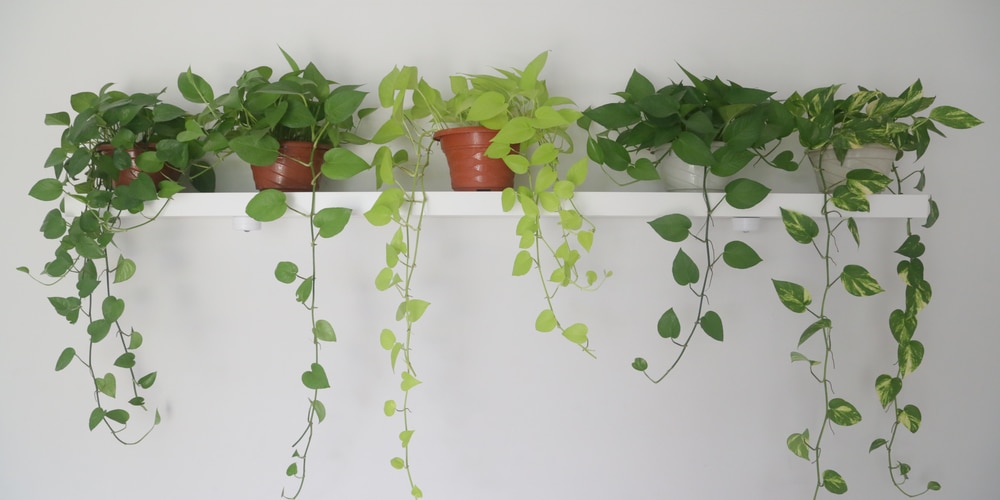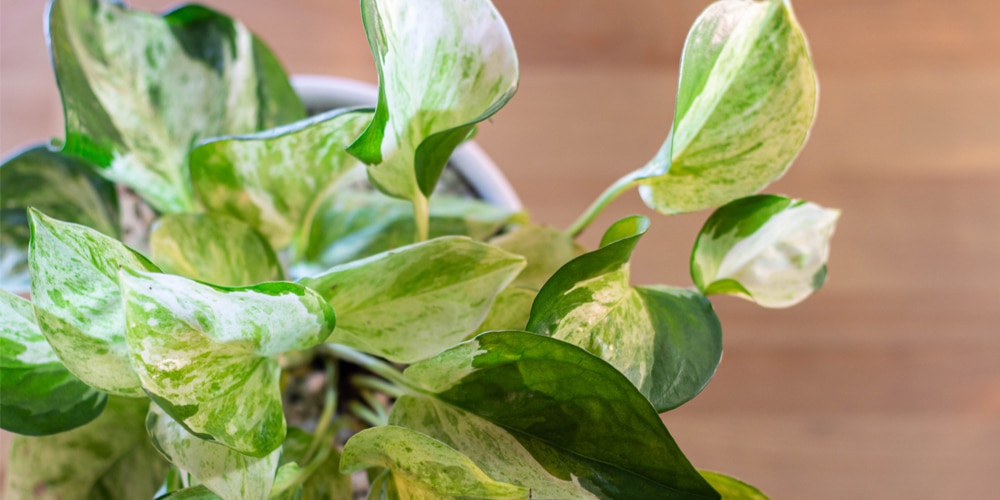Pothos plants will usually have perky and somewhat upright leaves that bring cheer in any room. You definitely have reason to worry if you spot one with droopy or sad-looking leaves. To help bring your precious plant to its usual vigor, here are 5 reasons that answer the question, ‘why is my pothos droopy?’
Why is My Pothos Droopy?
1. It Needs More Water
Pothos and its dozens of varieties like one thing, and that is water. They do enjoy consistently moist soil, but not to the point that you might overwater them.
Before you reach for that watering can though, you’ll want to make sure that they do need it. The easiest way to check is to put your finger in the soil and see if it’s dry. Alternatively, you can use a barbecue stick or chopstick to determine its condition.
If this is the case then go ahead and water the pot until it goes freely through the drain hole. Remember to water more often to prevent your pothos plant from drooping.
2. It’s Overwatered
On the other hand, you may have been too generous with the water and now the plant is paying the price.
You can check the soil to determine if this is true. Is the soil wet at the surface? Then withhold and make sure to drain out excess water by tipping it slightly over. You’ll want to have a pot that has adequate holes for draining, as well as soil that doesn’t hold too much water.
For faster recovery from overwatering, you can put the pothos plant in a warm room or on the windowsill for a day or two.
3. The Roots are Rotting
Like any other plant, Pothos depend on a healthy root system to thrive. When the roots are affected then the plant might not have the ability to collect water in the soil and send it to the leaves.
Root rot often occurs in wet soil. The result is poor droopy leaves and wilting. If immediate action is not taken then it may cost you your pothos plant. Fortunately, you can spot it early when you see wilted leaves and yellow stems.
To rescue a pothos l from root rot, you will need to take it out of its current pot and soil. Air it out in a warm room or environment for several days, and hopefully, it will recover in time. Then, repot with new, well-draining soil and in a container with adequate drainage.
4. It’s Too Cold
Pothos love relatively warm temperatures and can survive for a long time in such an environment. They’re not suited for cold climates, especially come winter time and when temps drop to single digits.
Pothos plants left outside too long in cold weather tend to droop. The frost will damage the leaves and thus turn them droopy. Remember to bring in your plants when the cold season arrives, and protect them from the elements so they can survive until next spring.
It’s worthy to note that during cold you should allow the pothos plant to rest and not water it too much. Depending on where you live and where you place your plant, you should only water when the soil on the container or pot is halfway dry.
5. Low Humidity or Disease
Humidity could be the reason why your pothos is looking a bit sad. Fortunately, it’s easy to fix this problem and you wouldn’t need to spend money to get your plant sprightly again.
Just add a spare humidifier, or fill a dish with pebbles and water and set it atop the plant. Misting can be done but it’s not recommended, as it can lead to bacterial infection.
If the droop is accompanied by a change of leaf color from green to brown or yellow, then it might be a disease or infestation. Wilting and black spots are just a few signs that your pothos might be dealing with an infection. Keep it away from harsh and direct sunlight to protect it from scorch and try to dig up the soil to see if it’s overly wet or soggy.
You’ll also want to isolate the plant from the rest as it could be infectious. Then, treat separately and repot with new soil.
Why is My Pothos Droopy?: Conclusion
As you can see there are a few reasons a pothos may start to droop. The correct care will help to revive your plant. Once you do that, you can get to work making your pothos thicker, fuller, and bushier. Good luck!

